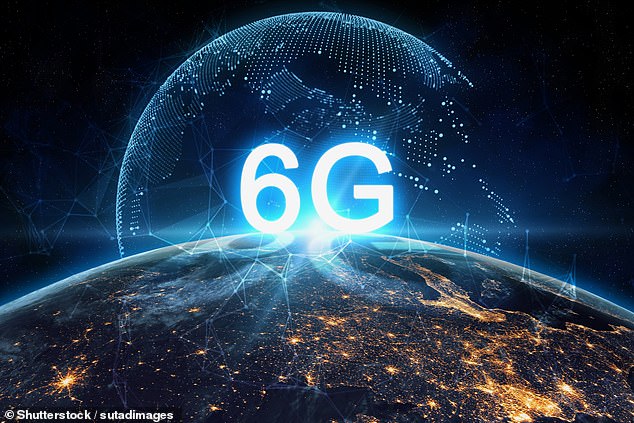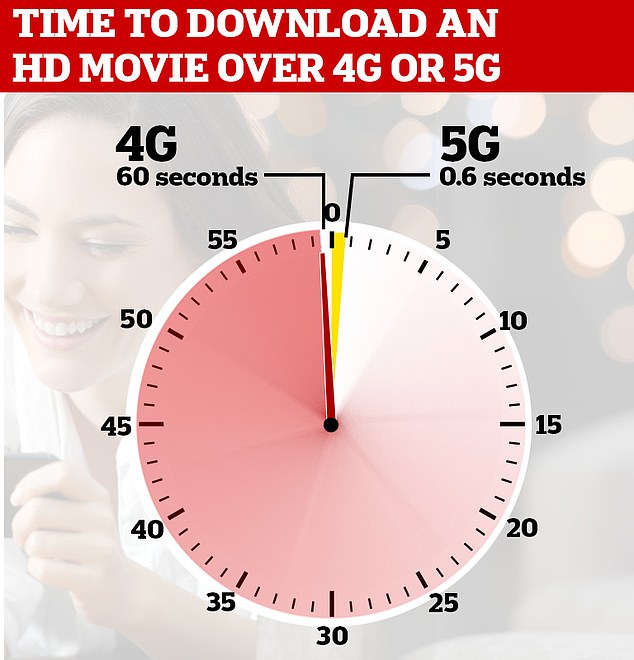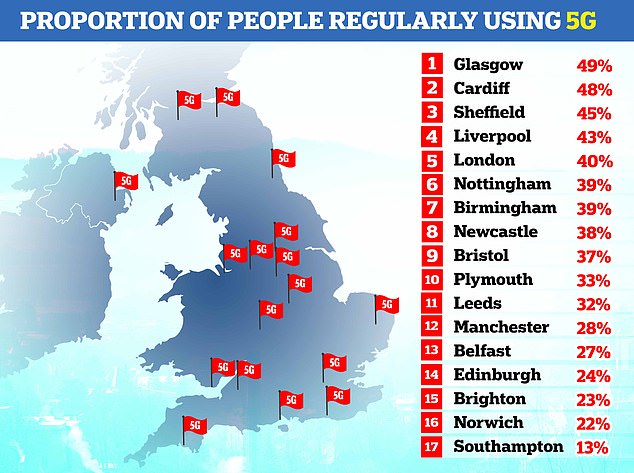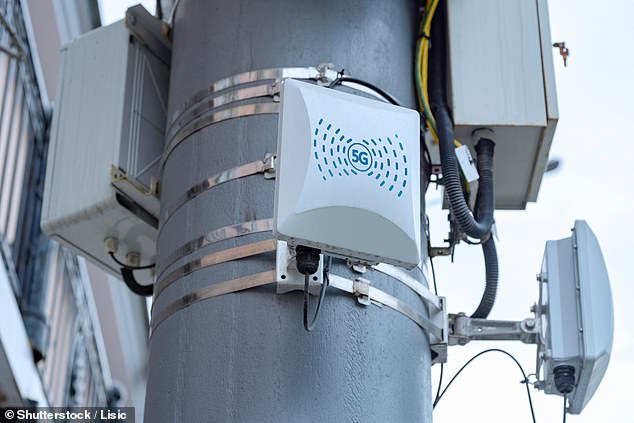Time for some more powerful batteries? 6G set to become available in 2030 will drain phones in 30 minutes, scientist claims
The next generation of wireless communications may be almost here, but a leading engineer says most of us will never be able to use it.
Eddie Ball, an expert in radio engineering at the University of Sheffield, believes 6G networks could be available as early as 2030.
Thanks to this new technology, downloads that would take seconds with 5G can now be completed in milliseconds.
However, Hall warns that 6G will be so powerful that it can drain a phone’s battery in just 30 minutes.
Mr Ball said: ‘A major issue is the energy efficiency of radio systems required to deliver high data rates in the future. This will lead to poor battery life in the future.’
An expert engineer says 6G could be here by 2030, but warns it will be so demanding it will drain your phone’s battery in just 30 minutes (stock image)
6G, or sixth generation wireless, is the next phase in the evolution of wireless technology.
Although 5G only rolled out in the UK in 2019, its successor 6G could be over 100 times faster and support communications with microsecond latency.
Speaking ahead of the British Science Festival in London this week, Mr Ball said: ‘When you’re using 5G it seems quite quick when you’re using your phone, but with 6G it’s almost instantaneous – there’s no delay at all.’
Researchers have yet to determine exactly how fast 6G will be, but some estimates suggest it could theoretically transfer 1TB of data per second.
This makes it ideal for applications such as remote surgery or self-driving cars, where extremely fast responses are required.

6G is the next generation of wireless mobile networks and allows downloads to be completed within milliseconds (stock image)

As this graph shows, 5G is up to 1000 times faster than older 4G networks. The next generation 6G is expected to be up to 100 times faster again
Mr Ball is currently presenting his research into technologies that could enable 6G at the British Science Festival at the University of East London.
He believes that this next-generation technology will soon enable blazing-fast internet.
However, the vast majority of people will not be able to benefit directly from this progress.
Transferring such large amounts of data requires a huge amount of energy. This problem is further exacerbated by the fact that current 6G hardware is extremely energy inefficient.
If a modern smartphone were equipped with 6G technology, its battery would be completely drained within 30 minutes of sending data over the network.

Research from 2022 found that many people in the UK had not yet felt the benefits of 5G networks. Experts believe it will take even longer for 6G to become widely used
“Our research at the University of Sheffield has started to identify new techniques and architectures that can deliver improved energy efficiency and performance, but it will be years before we see this in practice,” said Mr Ball.
Furthermore, 6G is a completely new technology. The current telephone and national infrastructure must therefore be upgraded. The transition to 5G required the installation of new masts.
Mr Ball said: ‘6G technology can only succeed if we have new, advanced radio frequency systems to deliver this technology.
‘The current infrastructure in the UK, including hardware, telephones and antennas, is not fit for purpose.’
Because the required infrastructure upgrade would be so expensive, it will likely only be installed in areas where extremely large data transfers are needed.
Examples of such areas are data centers and AI research facilities, highways used by self-driving cars or the so-called ‘drone highways’.

Just as 5G required the installation of new transmitters (see image), 6G networks will require expensive infrastructure upgrades that will only be practical where extremely large data transfers are needed.
This means that even if your phone could connect to 6G, the coverage would be so poor that it would fall back to 5G in most cases.
Therefore, it is unlikely that mobile phones will be upgraded to a 6G network in the near future.
While the development of 6G will be a big step forward, Ball said developers of the technology still don’t know what to do with it. He described it as a solution in search of a problem.
“Operators are still thinking about a killer use case for 6G, but I think we have yet to determine what that is,” the academic added.
One possibility is that doctors could use very small, short-range 6G networks to remotely control surgical robots.
This would result in the extremely low latencies and high reliability needed to perform the most delicate operations.
Still, Ball cannot rule out that researchers will soon discover “all sorts of weird, weird and wonderful applications, the likes of which we can only guess at.”
